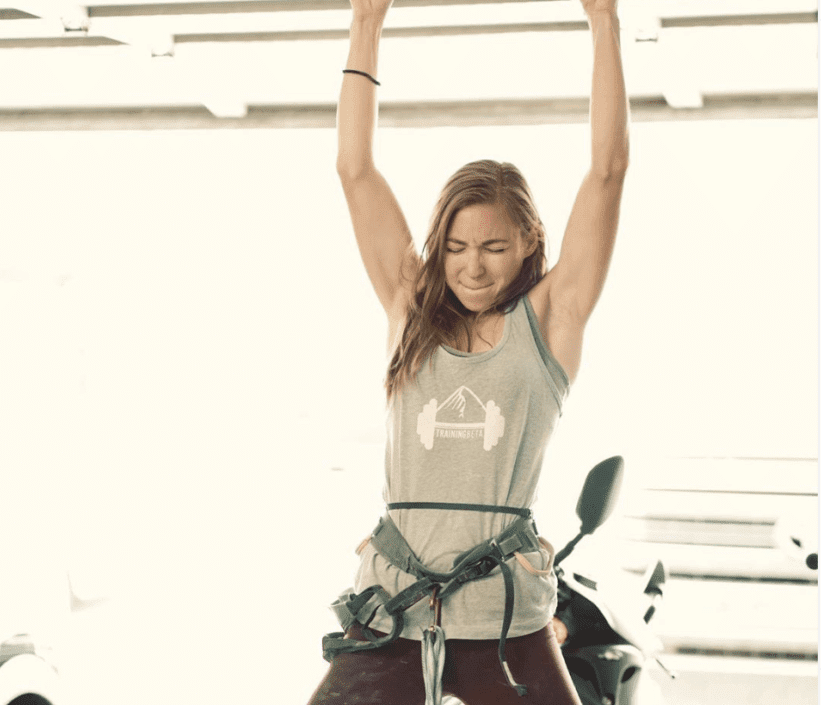Want To Do a One-Arm Pull-Up? Here’s How To Get There
This set of exercises will help you gradually build the necessary stability and strength in the back, shoulders, and biceps

The vast majority of climbers cannot do a one-arm pull-up. Many elite climbers can’t do one either. For most climbers, the top training priority should be hard climbing supplemented with a balanced strength and conditioning routine. However, if you’ve already got these covered and want to explore one-arm pull-ups, this article is for you. One-arm pull-ups are a fun training benchmark—and we all know that you can never have enough pull strength, whether on plastic or rock.
It takes a serious amount of power in the back, shoulder, and bicep to execute a one-arm pull-up with good form. You can’t just move directly from doing two-arm pull-ups to one-arm pull-ups—a lot of time and effort first needs to be dedicated to building strength and stability in the muscles surrounding the shoulder, scapula, and upper arm.
Lattice Training has compiled an excellent list of exercises for gradually building up to a one-arm pull-up. This set of exercises (described below) includes one-arm scapular shrugs, assisted one-arm pull-ups, assisted one-arm negatives, weighted two-arm pull-ups, hammer curls, archer pull-ups, and one-arm lock-offs.
Before embarking on a dedicated one-arm pull-up training program, you first need to make sure that you have solid shoulder and scapular strength. You should be able to perform the following exercises with relative ease: bodyweight pull-ups, scapular pull-ups, two-arm scapular shrugs, advanced forms of inverted rows, and one-arm hangs on a bar with both engaged and disengaged shoulder positions.

Exercises on the road to a one-arm pull-up
From the list of seven exercises below compiled by Lattice, choose two or three to perform once per week on a strength/power training day. Do not do these if you’re already considerably fatigued as you’ll be pushing your max strength and power.
The choices are up to you. Choose exercises that work well with your workout system—you might not have a pulley system for example. Also choose exercises that tackle your weaknesses. If you have relatively weak biceps for example, hammer curls might be a good starting point. If you’re just starting out, definitely include one-arm scapular shrugs in your routine as these build much-needed stability, making other exercises safer. Assisted one-arm lock-offs are also a great exercise for those with relatively less strength. Be sure to train both arms with equal frequency to prevent imbalances.
As you train in the weeks and months ahead, carefully note your progress for each exercise in a training logbook. If an exercise starts to feel like you’re not near your max strength level, increase weight/resistance or swap it out for another one.
1. One-arm scapular shrugs
Hang from a bar with one arm using a relaxed (disengaged) shoulder position. Engage your scapula down, raising your body vertically. Do not bend your arm to create vertical movement. Hold the engaged position for a second and then lower back down to the relaxed position. Do 3 sets of 5 reps. Rest 1 minute between sets.
2. Assisted one-arm pull-ups
Set up a pulley system to offset the weight of your body while doing a one-arm pull-up. Use a weight that allows you perform a full range of motion. You could also put your feet in a large resistance band hanging from a bar but these don’t generally provide an even, consistent weight-offsetting effect like a pulley system does. Do 2 sets of 3 reps, resting 3 minutes between sets.
3. Assisted one-arm negatives
Using the same weight-offsetting pulley system, stand on a stool or box and get into the top (end) position of a one-arm pull-up. Slowly lower yourself back down to the starting position. Do 2 sets of 2 reps, resting 3 minutes between sets.
4. Weighted two-arm pull-ups
If you’re exploring one-arm pull-ups, you’re likely already doing these. If you’re not, check out our explainer on this key exercise. In a one-arm pull-up training context, Lattice recommends doing 4 sets of 3 reps of your maximum load. Rest 3 minutes between sets.
5. Hammer curls
Curl a dumbbell oriented in a vertical position, alternating between arms. Engage your core and make sure you’re covering a full range of motion. The weight should be sub-maximal, but difficult. Do 4 sets of 6 reps, resting at least 3 minutes between sets.
6. Archer pull-ups
Start as if performing a wide-grip two-armed pull-up. Instead of pulling your body up to the centre of the bar, pull the top of your chest up to your right hand. Lower back down and then pull up to your left hand. Do 3 sets of 8 reps (alternating between right and left sides). Rest one minute between sets.
7. One-arm lock-offs
Stand on a stool or box and get into a 90-degree lock-off position. Hold the lock-off for 5 seconds and then lower down in a controlled motion. If you can’t do this at bodyweight, hold onto a sling gently with your opposite hand. Better yet, hold onto a pulley system (like in assisted one-arm pull-ups) so you can better control the amount of weight you’re offsetting.
You can watch demonstrations of the first four exercises in the Lattice Training Instagram video below.
To see demonstrations of the final three exercises, check out this Lattice Training video.
Featured photo from Lattice Training video.


